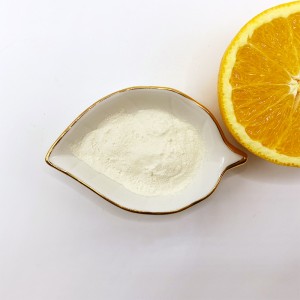Amino acid Chelate Calcium (AminoCa)
Product Description
AminoCa is an innovative and potent crop supplement that provides plants with the essential nutrients they need to thrive. AminoCa features a potent content of 25-30% amino acids and 10% calcium in chelated form, making it the perfect solution for optimizing plant growth, increasing crop yields and achieving healthy, vibrant plants.
AminoCa is designed to ensure plants have the nutrients they need for healthy growth and development. Calcium is an essential plant nutrient that plays a vital role in promoting cell wall development, root growth and plant architecture. Plus, it helps improve soil structure, making it easier for plants to absorb water and other essential nutrients.
AminoCa provides the plants with a powerful nutritional package that helps support their overall health and vitality. Amino acids, the building blocks of proteins, help promote plant growth and development, while calcium in amino acid chelated form ensures nutrients are readily available for plant uptake. It can be absorbed quickly by plants, making it more effective than traditional calcium supplements.
With AminoCa, you can look forward to seeing improved plant vigor, stronger stems and stronger roots. It also helps plants resist environmental stressors such as drought, cold temperatures and disease, ensuring the crops are healthy and productive.
General Information
|
Physical Properties |
Chemical Properties |
||
|
Color |
Light Yellow |
Total Amino acid Content |
25~30% |
|
Odor |
Special Aromatic |
Nitrogen |
10% |
|
Water Solubility |
100% |
medium elements |
10% |
|
Moisture |
5% |
||
|
PH Value |
3~6 |
||
Benefits
Details of Calcium
Calcium plays a major role in crop growth, promoting fruit development and preventing fruit cracking.
Calcium is a component of the cell wall and intercellular layer. Calcium plays an important role in the synthesis of carbohydrates and proteins, as well as in the balance of physiological activities in plants. It can promote protoplasmic colloid condensation, reduce hydration, increase protoplasmic viscosity, and enhance drought resistance and heat resistance. In the absence of calcium, the root growth was significantly inhibited, the root was short and many, gray, yellow, the cell wall was sticky, and the cells in the elongated part of the root were damaged, even local decay; Young leaves become hooked at the tips, dark green, new leaves die quickly; Flowers atrophied; Drupe fruit trees are prone to gum disease and root cancer.
Symptoms of Molybdenum Deficiency in Crops
When calcium is deficient, root growth is significantly inhibited, roots are short and numerous, grayish-yellow, cell walls are sticky, cells in root extension are damaged, and even local rot; the tips of young leaves become hook-shaped, dark green, and new leaves die quickly; Flowers shrink; stone fruit trees are prone to gum disease and root cancer. Calcium does not flow easily in the tree, and older leaves contain more calcium than young leaves. Sometimes, although the leaves are not deficient in calcium, the fruit has shown calcium deficiency. Apple bitter and spicy disease, water heart disease, acne spot disease, pear black heart disease, peach top rot, and cherry cracking are all related to the lack of calcium in the fruit.
1. Leafy and stem vegetables
Chinese cabbage, kale, and celery show the specific performance of radish fat. The missing plant will appear curled, and finally the cheese rind will appear dry, directly like a dry rind, called a dry rind, but the inner leaf margins are curled in white patches, and the inner growth point is completely dead.
2. Fruit vegetables
The specific performance of tomato and cucumber when calcium is deficient. Regardless of tomato, cucumber, young leaves are yellow, normally growing plants change haggard and wilting, petioles roll in, terminal bud necrosis, young shoot tissue necrosis.
Root growth is stagnant, the roots are thin and short, with many branches, and the epidermis is brown. When calcium is deficient, tomato and cucumber fruits are rotten and hollow. Leaf margins, veins, and intervein turn green, and plants become thinner and shorter.
3. Root vegetables
Root vegetables, such as radishes, are specifically expressed when calcium is deficient. The specific manifestations of calcium deficiency in carrots are radish leaves will gradually lose their green color, appear necrotic, and eventually the plant will die.
4. Fruit trees
Malnutrition occurs when calcium is deficient, resulting in premature yellowing of leaves. Calcium deficiency can cause problems with the fruit of many fruit trees. Apple water core is a translucent watery pulp that radiates from the center of the apple and eventually fills the gaps between the cells, causing the fruit to rot. The long-term calcium deficiency of pomegranate after giving birth often cracks the fruit, resulting in less commercial fruit. Jujube calcium deficiency begins to crack at maturity, and the serious cracking rate is over 60%.
Benefits of Amino acid Ca
The nutrients are relatively balanced, and it can improve the physical and chemical properties of the soil and improve the aggregate structure of the soil. amino acid is nearly the smallest molecule that constitutes protein, amino acids exist in fertilizers, which are easily absorbed by crops. meanwhile, Amino acid has the functional groups of amino and carboxyl are the chelating agent for metal ions, which can complex (chelate) metal ions, and it is easy to carry Calcium into plants. In this way, plant utilization of various nutrients can be improved. It can be directly absorbed by various organs of plants, passively absorbed or osmotically absorbed under photosynthesis, and obvious effects can be observed in a short period of time after use. At the same time, it can promote the early maturity of crops and shorten the growth cycle.
Frequently Asked Question
1.Can you make different elements together chelated with Amino acid? Such as amino acid chelate CaMg or amino acid chelate CaB?
Yes, only the content should be double checked.
2. What kinds of crops could be used AminoCa?
Calcium is a kind of medium element that occurs widely among different kinds of crops. If Calcium is not replenished in time. Crops may occur related sickness. when lacking calcium apple may have bitter pox, acne; cracked fruit would also happen without calcium replenish in time for cherry, grapes and watermelon.
Application
It is mainly used for different kinds of agricultural fertilizing fields: fruit, pastures, and horticultural crops, etc;
When blending with chemical fertilizers, utilization rate can be improved, in which the quantity used for fertilizers could be reduced.
Irrigation and foliar spray is recommended for the usage, dilution Rates:
Foliar spray: 1: 600-1000;
Irrigation: 1: 500-600.
Packaging and Storage
Packaging and storage Available in 1Kg, 5Kg, 10Kg, 20Kg bag, jumbo bag;
Storage: Dry, cool, direct sun light proof, moisture proof warehouse;
Shelf life: 36 months.












